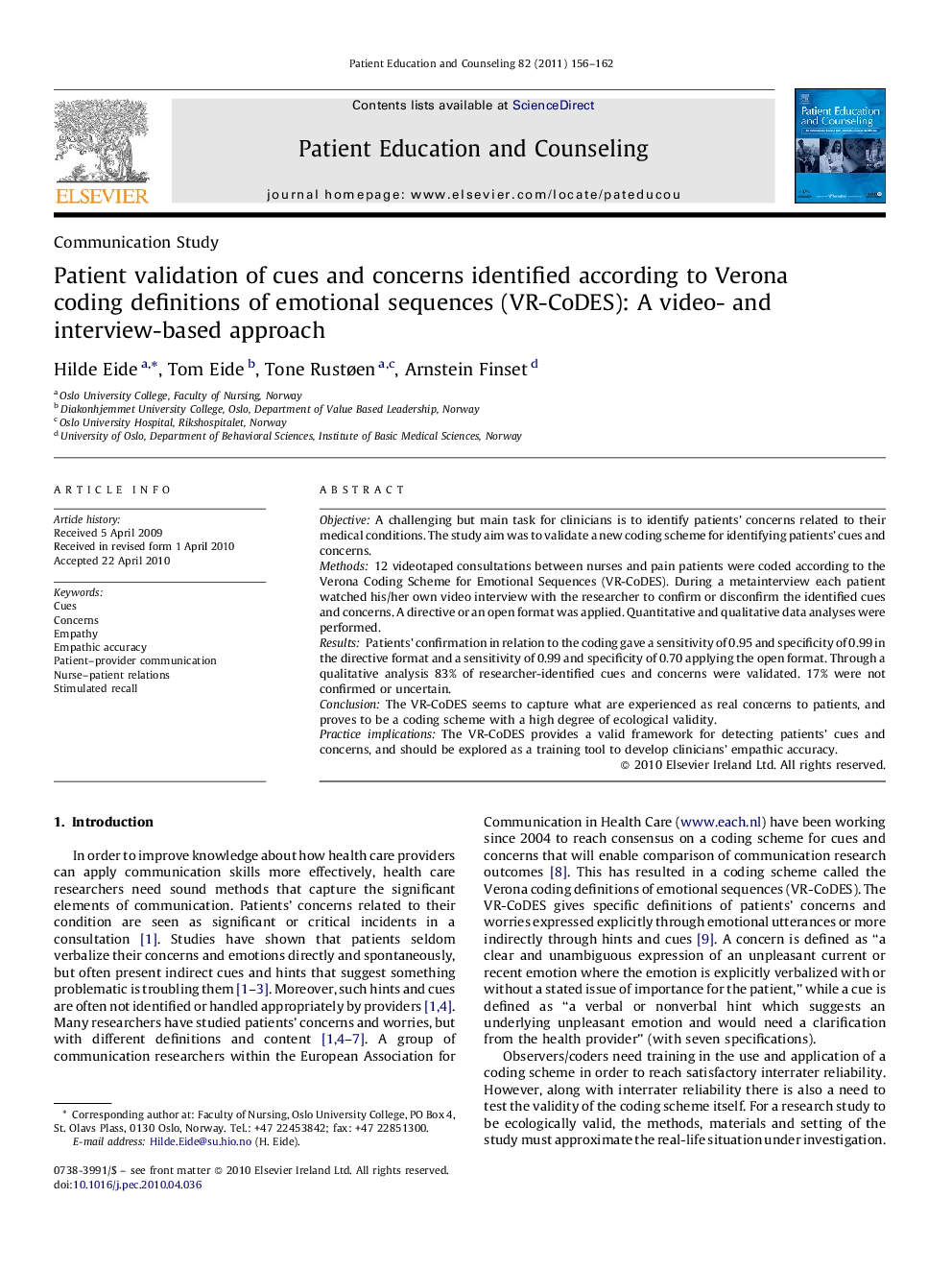| Article ID | Journal | Published Year | Pages | File Type |
|---|---|---|---|---|
| 3816205 | Patient Education and Counseling | 2011 | 7 Pages |
ObjectiveA challenging but main task for clinicians is to identify patients’ concerns related to their medical conditions. The study aim was to validate a new coding scheme for identifying patients’ cues and concerns.Methods12 videotaped consultations between nurses and pain patients were coded according to the Verona Coding Scheme for Emotional Sequences (VR-CoDES). During a metainterview each patient watched his/her own video interview with the researcher to confirm or disconfirm the identified cues and concerns. A directive or an open format was applied. Quantitative and qualitative data analyses were performed.ResultsPatients’ confirmation in relation to the coding gave a sensitivity of 0.95 and specificity of 0.99 in the directive format and a sensitivity of 0.99 and specificity of 0.70 applying the open format. Through a qualitative analysis 83% of researcher-identified cues and concerns were validated. 17% were not confirmed or uncertain.ConclusionThe VR-CoDES seems to capture what are experienced as real concerns to patients, and proves to be a coding scheme with a high degree of ecological validity.Practice implicationsThe VR-CoDES provides a valid framework for detecting patients’ cues and concerns, and should be explored as a training tool to develop clinicians’ empathic accuracy.
